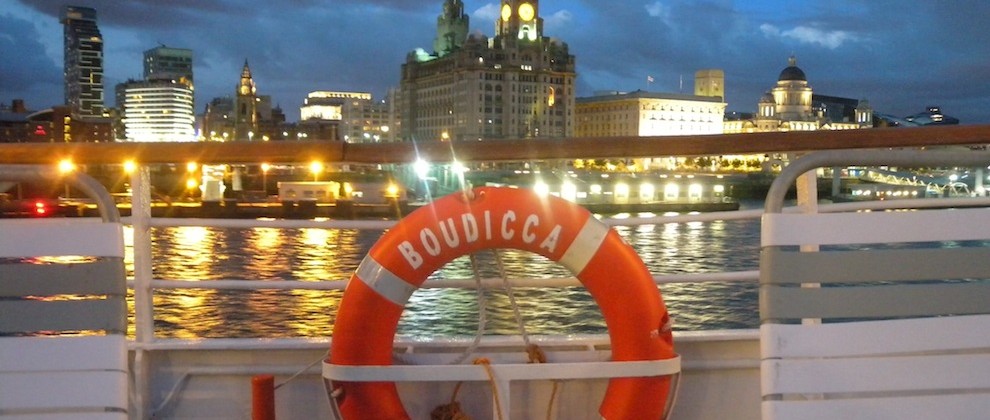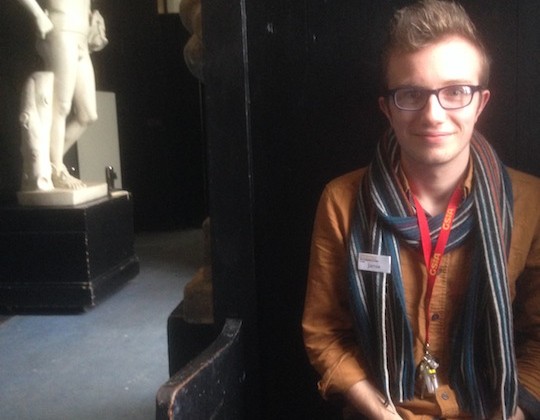
As a seafaring, island nation, we have traditionally looked to the sea as our defence in times of war, our trading link with the wider world and a source of natural resources.
This link provides the basis for the SeaBritain 2005 festival, a year-long programme of events and festivals based around the theme of Britain’s maritime history, culminating in the Trafalgar Weekend (21-23 October) with events throughout the UK and the Channel Islands.
“The sea touches our lives in countless ways,” says David Quarmby, Chairman, SeaBritain 2005.
“Being surrounded by sea has defined our history, our culture, our national psyche, how as a trading nation we have prospered, and the kind of recreation at which our nation excels.”
Festival city
The Battle of Trafalgar was a defining moment in British history, whereby Admiral Lord Nelson saw off the invasion threat led by Napoleon, against a combined fleet of French and Spanish ships.
He may have been fatally wounded by a sniper’s bullet on October 21, 1805 – you can still visit the spot where he fell on board Trafalgar – but his legacy lives on. Particularly, that is, in Portsmouth, the festival’s hub city.
Portsmouth is where Captain Cook arrived after circumnavigating the world, Captain Bligh of Bounty fame sailed from its harbour and Lord Nelson himself set sail in his flagship vessel, HMS Victory, in 1805 for the Battle of Trafalgar.
Today the Portsmouth Historic Dockyard is home to some naval big-hitters, including the restored HMS Victory, the oldest commissioned warship in the world.
It also houses Henry VIII’s warship, the Mary Rose. This was raised to the surface in 1982 after 17 years of salvaged operations and now restored to its Tudor glory.
But the festival, and wider links to our maritime heritage are not confined solely to Portsmouth.
As the festivities get underway, we profile six of Britain’s best coastal cities for messing about on the water this spring.
Liverpool
Maritime heritage and Liverpool’s history are inextricably linked, a fact recognised by Unesco’s decision to award the Liverpool waterfront [pictured above] its World Heritage status.
The abundance of merchant’s houses reflects the city’s erstwhile status as a major commercial port, while amongst the warehouse conversions, the Merseyside Maritime Museum today traces the links between the city and the sea.
Liverpool has designated 2005 ‘Year of the Sea’ as part of its Capital of Culture 2008 countdown. As such, the 25th annual Mersey River Festival will be the biggest ever this summer from June 10-13.
But if culture doesn’t float your boat, don’t worry. The Albert Dock has some of the city’s best shopping, while Mersey Ferries still ply the famous ferry cross the Mersey.
Bristol
The redevelopment of Bristol’s harbourside over the last ten years has re-established the city’s links with the sea.
This year also sees the completion of a conservation project to restore both Brunel’s iron-hulled ship, the SS Great Britain and the Victorian dockyard it was built in, to their original Victorian glory.
The Bristol Harbour Festival runs 31 July to 1 August this summer with a slew of family events.
Meanwhile, if you fancy something more active, the Severn Way is the longest riverside walk in England and terminates in Bristol.
If you prefer getting in the water than admiring it, the World Heritage Roman Baths in nearby Bath have reclaimed the steaming dipping pools for public use after years of restoration.
Wales
The redevelopment of Cardiff Docks has seen a run-down area transformed into a ‘little Covent Garden by the sea, especially since the opening of the Millennium Centre last November.
The Cardiff Bay Regatta (July 28-29) kicks off this summer’s Cardiff Harbour Festival along the waterfront, while Nelson Week has family activities, such as visits to the tall ship Tenacious.
Further afield, Wales plays host this year to two major maritime festivals: the Swansea Bay Summer Festival in June with the Welsh Power Boat Grand Prix; and the Cleddu Waterway Festival in Milford Haven.
Meanwhile, Wales continues to act as a magnet to adrenaline-seekers trying new sports such as kitesurfing and coast steering, especially around the Gower Peninsula and the Pembrokeshire coast.
Penzance
With the Atlantic crashing in on the beaches of Cornwall and the heart of Britain’s burgeoning waterspouts industry located along the coast, the South West is natural seafaring territory.
This year, the National Maritime Museum Cornwall in Falmouth hosts a major surfing exhibition from July 1 to December 1 in its Flotilla Gallery, celebrating Britain’s surf culture.
Newquay, the home of British surfing, boasts the Extreme Academy for the pick of adrenaline adventures.
Otherwise, nearby Plymouth Hoe is rich in maritime heritage as Frances Drake’s favourite bowels green and the National Maritime Aquarium Plymouth has the deepest tank in Europe.
Newcastle
The Northeast’s cultural hub has transformed its waterfront in recent years with projects such as the award-winning Gateshead Millennium Bridge and the Sage Gateshead performing arts centre bringing new vibrancy to the area.
This summer the city will launch its own River Festival, the main event of which will be The Tall Ships’ Race, whereby 120 tall ships will drop anchor in the Tyne before setting sail across the North Sea to Norway.
The Northeast also features some of the best coarse and game fishing in the UK, not to mention great bracing walks, accompanied by seaside vistas, along the spectacular Cleveland Way walking trail.
Scotland
From the Tall Ships on the River Clyde, to the erstwhile Royal Yacht Britannia now berthed in the port of Leith, just outside Edinburgh, Scotland is also celebrating its maritime heritage this year.
This year’s Edinburgh Military Tattoo, running August 5-27, has a strong nautical theme, while the Scottish Traditional Boat Festival, held in Portsoy Harbour, Aberdeenshire, from July 2-4, features one of the largest collections of traditional boats in the UK.
Meanwhile, the Glasgow River Festival celebrates its second year in 2005 with events along The Clyde. Special events will take place over the weekend at venues along the waterfront and on the river itself, including Glasgow Science Centre, The Tall Ship at Glasgow Harbour and the SECC.
This summer will also see further completion of the Waterfront Edinburgh project, one of Scotland’s largest urban regeneration schemes to transform derelict land around Granton.
What did you think of this story? Post your comments below.
This story was first published in Hotline magazine in 2005.
Liked this? Try also Exploring maritime heritage in Liverpool.



 [Photo via VisitScotland.com]
[Photo via VisitScotland.com]